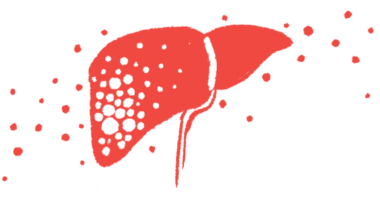Sensor tracking light exposure may help EPP patients: Study
Wrist-worn sensor could predict risk of symptoms

A wearable light sensor may be used to help track light exposure and predict the risk of symptoms for people with erythropoietic protoporphyria (EPP), a study found.
“Our results show significant promise for [the device’s] use in EPP and suggest promise for other photosensitivity disorders,” the researchers wrote.
The study, “Observational pilot study of multi-wavelength wearable light dosimetry for erythropoietic protoporphyria,” was published in the International Journal of Dermatology. The work was funded in part by Disc Medicine, a company that develops therapies for rare blood disorders, including some types of porphyria.
One of the cardinal symptoms of EPP is photosensitivity, in which exposure to sunlight or other sources of bright light can cause painful skin reactions, which in turn have a negative impact on patients’ quality of life.
For the study, scientists at several academic centers and companies across the U.S. collaborated to develop and test a light sensor that could be used to help people with EPP prevent symptoms brought on by excessive light exposure.
Pilot study provides data
“Our objective was to develop and validate a wearable light exposure device and correlate measurements with light sensitivity in EPP to predict and prevent symptoms,” the team wrote.
Researchers developed sensors that could record exposure to three different light wavelengths: ultraviolet, blue, and red. Two versions of the sensor were developed, one worn on the wrist like a watch, and the other affixed to the front of a shirt like a brooch.
To test the sensors, researchers recruited five adults with EPP — four females and one male, with a mean age of 39.2 years — for a pilot study. Participants wore both versions of the sensors for three weeks, recording the time they spent exposed to light and their symptoms. Participants were also asked to expose themselves to light to the point of eliciting early symptoms of EPP, such as tingling or itching, at least once per week.
Using data from the pilot study, researchers looked to see which light-based measures from the sensors were most predictive of patients’ symptoms.
Results showed that the amount of blue light exposure was more predictive of symptoms than the other two light wavelengths. For every one standard deviation increase in blue light exposure during a given day, the chances of experiencing symptoms on that day were increased by nearly threefold.
Light measurements recorded by the wrist-worn sensor were generally better for predicting symptoms than the sensor affixed to the front of the shirt. Patients also showed a universal preference for the watch-like sensor.
“While the watch performed better than the shirt clip in EPP patients … this might not be true in those without EPP or those with photosensitivities other than EPP,” the researchers wrote, noting that a possible reason the watch-like sensor had better performance was that it “captures light that most closely approximates the light doses on EPP patients’ most sensitive skin region: the hands.”
Although the study was not statistically powered to discriminate differences in the accuracy of the light sensor and patient-reported outdoor light exposure at predicting impending symptoms, results showed the blue light watch sensor was able to predict symptoms with an accuracy of 78%.
Since the device records automatically, it could offer a less burdensome and more objective way to measure light exposure in EPP patients.
“Self-reporting outdoor time is highly dependent on patient engagement and is burdensome to patients, with the potential for wide variability in the accuracy of reporting between patient,” the researchers wrote.
They noted that further work is needed to verify the results and to expand the technology to help patients proactively predict their risk of symptoms.
“This study lays essential groundwork for future studies of EPP light dosimetry, which will be critical for clinical trial endpoints and predicting and preventing EPP symptoms,” they wrote.







